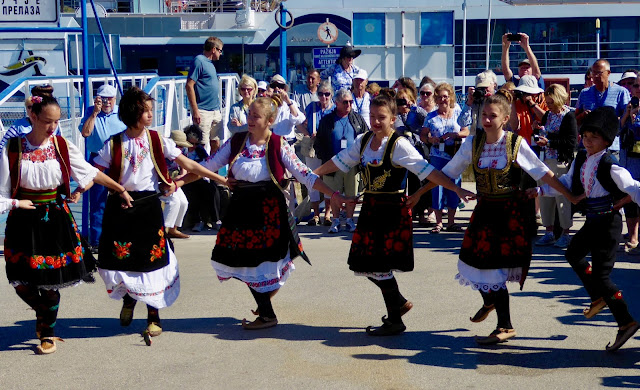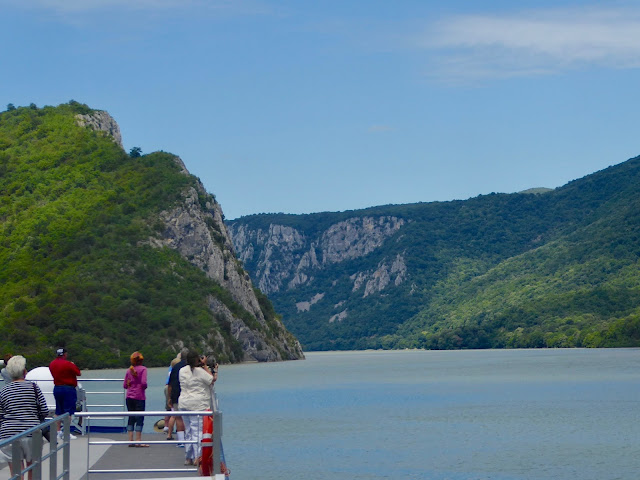 |
| The Danube and Valva Rivers meet in Belgrade. Photo © by Judy Wells. |
We didn't see an "attack here" sign, but in the past 2,016 years the city has been destroyed 77 times and changed hands 66 times with 6 million residents killed in the process.
 |
| Entering Kalemegdan Fortress. Photo © by Judy Wells. |
 |
| Doors of Kalemegdan Fortress. Photo © by Judy Wells. |
Tip: Yes, you climb a slope but the path is either clay, paved or grassy and the elevation change is very gradual.
When the tribes came south in the 7th century A.D., the Serbs were the largest and strongest of them all, replacing the Romans and commanding three times the land they have now. The Turks arrived and took over in 1389.
It is easy to see why they all wanted to control Belgrade. The views from the fort's ramparts are as beautiful as they are strategic.
Today the fort is a park, lushly green and leafy, dotted with monuments inside with clay tennis and basketball courts, a children's play area and displays of old military weaponry outside and in the grassed over moat.
 |
| A dinosaur show in the children's play area. Photo © by judy Wells. |
Downtown Belgrade looks equally engaging but after a comfort and snack stop in Republic Square, rain storms curtailed our exploration. Word is that the city has a booming nightlife.
 |
| Revolution Square area in Belgrade. |
Donji Milanovac
 |
| Young dancers came first. Photo © by judy Wells. |
The small museum was interesting, especially the section on sturgeon fishing which used to be the village's main economy. A family was allowed to take one sturgeon a year; the sale of caviar from a 600-pound sturgeon supported them nicely. The town was moved three times to accommodate shifts in the Danube and the resulting dams killed of the sturgeon.
 |
| Greek Orthodox Church. Photo © by Judy Wells. |
Tip: Walking is easy with few changes of elevation and not far to go.
After days of switching currencies every day and being stuck with leftover bills and coins that were useless in the next country, this came as both a shock and a treat. Vendors not only took any currency you happened to have, they returned change in any currency you wanted.
I think Donji Milanovac has found a new industry: tourists.
Iron Gates
Cruising the Danube as River Splendor transits the Iron Gates, 83 miles of gorges separating Serbia and Romania was a treat. The good news was that we loved relaxing with a beverage and watching the beautiful scenery pass by, waving at fishermen and pleasure boaters. The bad news: there was no stopping and a few places looked worth one. |
| Dacian King Decebalus carved into a cliff. Photo © by judy Wells. |
Particularly intriguing was the "Romanian Rushmore," a giant head of Dacian King Decebalus caved from a stone-faced cliff. It was an eerie vision, like a scene from a Tolkien novel, and strangely disappointing to discover it was completed in 2004 and not centuries ago.
 |
| Trajan's bridge brought the defeat of the Dacians. Photo © by judy Wells. |
It was bittersweet going through the locks that killed off the sturgeon but also fun getting to see the "tags" of ships' that have used them.
 |
| We share a lock with Avalon Passion. |









0 comments:
Post a Comment